Our Family Business, Pecos Cantaloupes
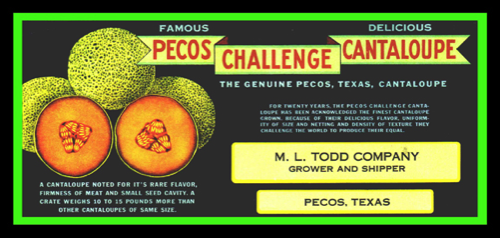

There were other important growers, of course, but granddad was the first to recognize the special flavor of the Pecos melon as a viable commercial enterprise. Their first customer of note was the T&P Railroad dining cars, and word of mouth advertising by those that enjoyed half a cantaloupe on their breakfast trays was one of the first ways the special sweetness of the melons became widely know. The label show above was granddad's original, although in later years we had others...
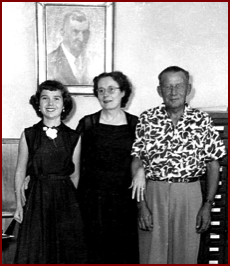
The secret to our business was that we shipped almost all of our melons to individuals as gift shipments instead of peddling them to grocery stores etc; much better prices! My mother gradually built up a client list that ordered almost every year. Companies and politicians often placed large orders for the unique gift of fresh cantaloupes delivered to your home!
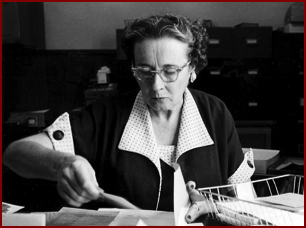
Mother taught Barbara and me to type out of Parents Magazine, while we were still in Jr. High, and put us to work in the office. I can still remember the names of some of our regular customers that I typed every week!
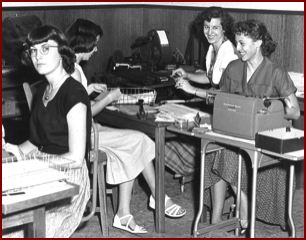
Pecos cantaloupes began to ripen in mid-July and often continued until mid-October. They were hand picked in the field and brought to our packing shed for grading, packing, and shipment. Because the melons had to be picked and processed daily, the cantaloupe shed usually a busy place, and where a lot of different things had to happen with the melons before the end of the day. We thought we had a certain amount of automation and efficiency, but by today's standards things were mostly done by hand... it took ALL hands!
As you can tell, our farm operation was very much a “family affair.” A vital part of our family were the Mexican families who lived on our property and worked for us. Some years, during the growing season, we also used “wetback,” labor. These were illegal workers from Mexico that crossed the Rio Grande to find work in the U.S. They had to stay on our property or be sent back to Mexico. We treated them with equal respect and care as part of our family business. Some of them returned to work for “Mr. Neil,” year after year...
As you can tell, our farm operation was very much a “family affair.” A vital part of our family were the Mexican families who lived on our property and worked for us. Some years, during the growing season, we also used “wetback,” labor. These were illegal workers from Mexico that crossed the Rio Grande to find work in the U.S. They had to stay on our property or be sent back to Mexico. We treated them with equal respect and care as part of our family business. Some of them returned to work for “Mr. Neil,” year after year...
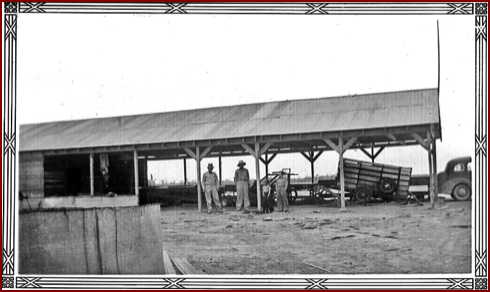
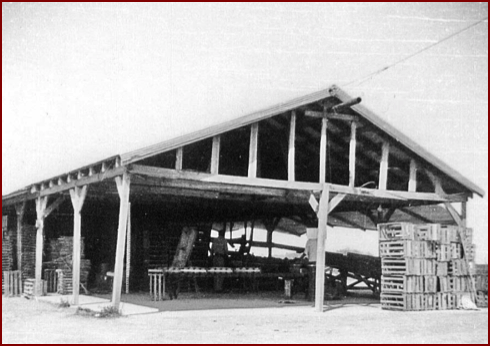
The melons came in from the field to this shed several times during the day. The first step was "grading" the field melons. Grandad Todd only shipped "perfect" melons; culls were sorted out to sell to people coming to the shed, or were fed to the hogs. (Most of the culls were perfectly OK and flavorful to eat, but either were over ripe for shipment, were sunburned, or otherwise imperfect.) The "perfect" melons were sorted by ripeness and dropped into packing bins. This was critical, for depending on how far the melons were to be shipped, they had to be selected and then packed according to their ripeness. (Melons less than half-ripe, sometimes picked by mistake, were discarded, as they would not ripen to full "sugar" and sweetness. Interestingly, these degrees of ripeness were clearly indicated by how much of the stem from the vine "slipped out" when the melon was picked: "full slips" were ripe, "three-quarter slips" were three-quarters ripe, "half slips" were half ripe, and "one-quarter slips" were one quarter ripe. Full slips could be shipped for two-day delivery; three-quarter slips for three-day deliver, half-slips for four day delivery, and one-quarter for five day delivery. We shipped melons as far as New England; the arrived dead ripe but our customers said they were the best they had ever eaten!
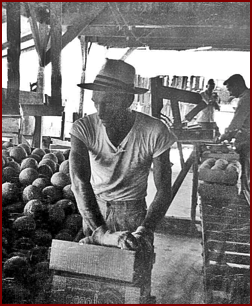
The man shown here, packing melons from the grading bins, is our long-time friend, Marcus Dingler. He came from East Texas for several years to work with us and eventually moved his family to Pecos. In later years, he and his Pecos cousin, Bob Dean, purchased our business when Neil and Zorene were ready to retire.
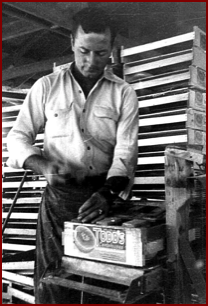
In many ways, these workers became part of our family. Marcus was almost like an "uncle" to me, and I was always trying some "project" that Marcus convinced me would work! My sister Barbara had a real crush on good-looking Mansfield, 15 years her senior!
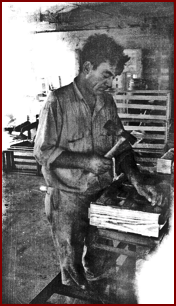
Down through the years I have been able to keep up with some of Chico's family. In particular, his son Dulce and his family have lived in the DFW area for many years, and we still see each other now and then...
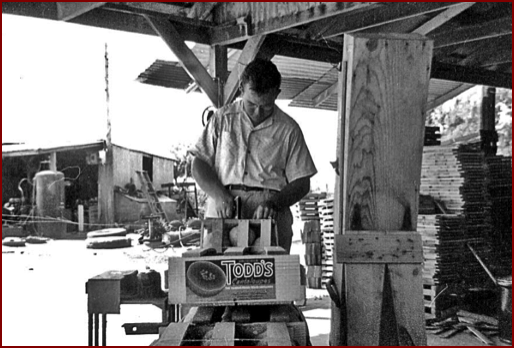
The last step in processing a crate of cantaloupes for shipment was "tagging." This was one of my regular jobs, and involved a good deal of responsibility, especially in keeping in touch with the office. You see, it was a daily job to match "orders," that mother had waiting in the office, with the melons that were harvested each day. We always began with an estimate of how many of each size crates would be packed, and, how many would ship short distances, moderate distances, or long distances. As the day progressed I would have to call for more orders (tags), or return some which we could not fill on that day. My "working orders" were kept efficiently in the rack you see to my left, which dad and I designed and built after much planning and discussion!
I was also responsible for "labeling," pasting our proprietery label on the end of each crate; this was done before the crates were nailed.
I was also responsible for "labeling," pasting our proprietery label on the end of each crate; this was done before the crates were nailed.
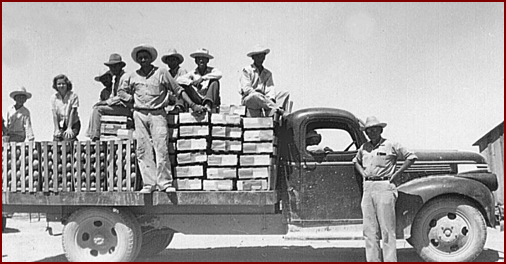
I see that Barbara has taken a break from the office and perched herself on the load, to get in the picture! Neil is standing by the cab door, and that might be Dulce in the front seat. I took the picture with mother's old Kodak box camera. It's a shame we don't have more pictures of such a memorable time in our lives.
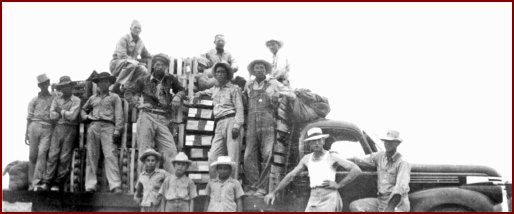
I think those are three of Chico's kids, on the ground beside the truck. Marcus is in his white t-shirt, and Chico is far right... I can tell just by the way he is standing! The rest are our wetback crew, who worked for us just during the growing season.
The last chore of the day was always a mad rush! We had to load up the orders for the day and drive them into town to be loaded in the "Railway Express" car of the evening passenger train. You may not remember Railway Express, but it was the pre-cursor to today's UPS and FedEx service; all of our cantaloupe gift shipments went out this way. The problem was, the train would only be at the station for 20 minutes, as it was basically a passenger train. Every crate had to be manhandled into the Railway Express car in 20 minutes! So, we often took every person from the shed and even some of the "pickers" from the field, to quickly load the crates, while the engineer blew his whistle in a threatening manner!
Our farm also grew other crops, mostly cotton and alfalfa. Dad carried me on his payroll as "Ramone" at $.10/hour; the Mexican workers made from $.30 to $.35/hour. I learned about everything in time, and as I got older I was given the responsibility of supervising the workers. It was a great place to grow up—and stay out of trouble!
RMT/07-09
Our farm also grew other crops, mostly cotton and alfalfa. Dad carried me on his payroll as "Ramone" at $.10/hour; the Mexican workers made from $.30 to $.35/hour. I learned about everything in time, and as I got older I was given the responsibility of supervising the workers. It was a great place to grow up—and stay out of trouble!
RMT/07-09
Publicity & Advertising
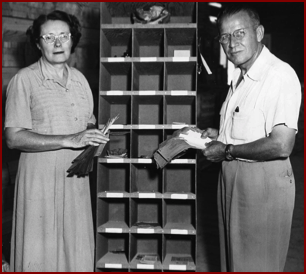
However, I can think of several exceptions to this presumption. For one thing, for several years, daddy went to the Texas State Fair in Dallas and set up a booth. When he came home he said, "people came by all the time that already knew about "Pecos Cantaloupes!"
The above picture was made (by Howard Studios, of course!) for an article written for "The Texas Stockman" magazine (not positive about the name.)
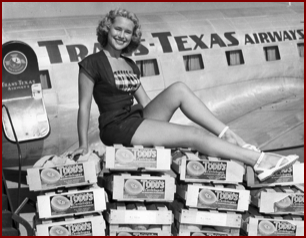
Your Memories About Todd's Cantaloupes
Dear PHS CLASSMATES:
This post seems to have really have struck a cord with my classmates, and I want to share your comments with everyone! (I announced my posting in my "PHS Friends List.") I hope you enjoy reading what others have remembered, half as much as I have! Its nice to know your family was respected in your home town. I will always be thankful for growing up in a small West Texas town—Pecos, Texas!
=Bye R@y Mack
Hi Ray Mack
This is a great page… Boy I spent a many an hour at the shed… In the off season Chico would put me in a crate, set me on the rollers and I had my own roller coaster… Your dad would be really proud of the article and the pictures… Hope all is well with you…
Warmest regards,
=John Charles
Ray, I enjoyed reading your stories about the cantaloupes very much. My memories start later, after Daddy and his cousin Marcus Dingler bought M. L. Todd Cantaloupes. Mother even did a stint as Harold Wendt Cantaloupe company (although they were all from the same fields).
My younger brother David used to sell the "culls" from a stand at the old cantaloupe shed on Highway 80, and my friend Sallie Butts and I had a stand closer to the old Ramada Inn one summer.
I remember watching the crates being loaded onto a refrigerated railroad car with crushed ice to keep them cold. I think it cost $4.95 per crate to send anywhere in the US.
I'm looking for Pecos melons here in Dallas, but no luck so far.
=Nancy (Dean) Eagan
Ray, I remember pulling a wagon door to door selling (culls ) as a way to earn a dollar or two. Enjoyed your cantaloupe memories. I haven"t had a Pecos cantaloupe in years.
I just don"t seem to be in Pecos at the right time. Thanks¡
=Sterling Fisher
Ray, I don’t know if you realized when you compiled your Family History that you would be helping so many of us get things straight. I did know the Deans and Dinglers were involved in the cantaloupe shed but did not realize that your family started it!! My granddaddy told me the story but I did not get the original founders correct. Thank you so much for this work of love you have shared with all of us! I sincerely appreciate your putting it out there for everyone to share and enjoy!
=Patty (Glover) Squyres
Ray Mack, I do not remember if I every met you but doubt it, I graduated in 1959. My parents were Prater and Frances Powell. We moved to Pecos about 1951 when I was in the 7th grade at Pecos Jr. High. Daddy went to work for his uncle Lester Prater on his farm at Hoban and later worked for Davis in his egg farm and delivering gas for Newell Oil Company. Mother worked for Collie Electric and later as Tax Assessor Collector for the City of Pecos. I have seen your notes on the Pecos High Notes and today decided to read your home page. I remember going to the cantaloupe sheds and buying cantaloupe by the grocery bag, we loved them and still enjoy them. My son and his family made a trip to West Texas this summer and brought some cantaloupe to me. They are still as good as I remember them. I enjoyed reading your stories very much.
=Frances (Powell) Pohl
Ray Mack, I was one of the high school girls your Mother hired to work in her office. I graduated in 1957, so it was probably the summers of "54 & "55. My Father was Sloan Paxton and I also worked in his office at the gas company later in my high school summers.
I remember your Mother as one of the nicest and most patient persons I have ever known and still have fond memories of her and working at the "shed". It was fun indeed.
Appreciate all your stories. Just wanted you to know your parents were respected and cared for by many.
=Ann (Paxton) Etheredgte
Ray, I am a 1959 graduate of PHS. Today I read your note in Pecos High notes, so I clicked on the Family Business...
Unfortunately, I do not have the memory you do. I worked two summers for the Dingler family in the office of Todd Cantaloupes. I think it was 1959 (the year I graduated from PHS) and 1960, after my freshman year at Texas Tech. It may have been the next summer, but I don't think so. Fannette Dingler was in charge of the office. She was married at the time, but I forget her married name. The office was below the shed where locals bought the cantaloupes. All of it was right next to the railroad tracks, of course. The office manager's name was (I think) Ella. A woman who had been a Catholic nun, and another woman named Etta Sullivan worked with me there also. Mr. Dingler would come in occasionally. I believe Fannette's brother, Bill, was the main packer. People would call and ask for Mr. Todd. If Mr. Dingler was around, he would answer as Mr. Todd. Otherwise, we would take a message for Mr. Todd. I do remember that the Rice Hotel in Houston received a crate either twice a week or once a week. Hap Jones was the railroad man. We would see him and his wife, Jack, often. They are the parents of my classmate, Jane.
I very quickly looked through your website. I noticed that you were a "Mac" devotee, as are my husband, Rodney and I. After 10 years of suffering with a PC, we bought an iMa the first year it came out. We had to get a new one last September, as the mother board crashed. We are not nearly as accomplished as you, but use it for many things. We recently bought a "backup" because if we were to lose our "stuff" we would also be lost.
=Belva (Hollingshead) Williams
RAY, THANK YOU FOR SENDING THIS TO ME. I HAVE PASSES IT ON THE MY SISTER AND CHILDREN. YOU MAY REMEMBER HAGAR BROTHERS SUPER MARKET ON THE FT. STOCKTON HWY MY DAD, JIMMY AND UNCLES EARL AND JOE HAGAR WERE IN THERE FOR A LONG TIME. WE SOLD A LOT OF MELONS. DAD SERVED ON THE SCHOOL BOARD A LONG TIME AND WORKED A LOT OF YOUNG PEOPLE IN THE STORE AS DID UNCLE JOE. HE HAD JOE'S SUPERETTE BY AL'S FOR A LONG TIME. THANKS
=Donna Sanders
Hey Ray Mack! I did so enjoy your narrative and pictures of the old cantaloupe business. It brought back so many memories; memories of Barbara, your dad, and your mother, tho I didn't know her as well. As you know Barbara was a classmate for many many years, and she was loved by all. Your dad? Well Neil was our Scout Master for many years, and one of the best. I especially remember the time he took a bob-tail truck loaded with scouts to the "new" scout ranch to try out camping there. That night one of the worst wind storms I have ever seen came down thru that Madera Canyon and nearly blew all of us away. We wound up sleeping in the back of that bob-tail trying to keep the canvas cover from blowing off.
We were back in Pecos this week and picked up some "Pecos" cantaloupes. They were good, better than most you can get in the stores, but as I tell the people at the stand, they are not like the cantaloupes of old. Just don't cut it. Thank you Ray for all you do.
=Tommy Beauchamp '49
Ray, I so enjoyed the cantaloupe family story. Remember all of the folks you mentioned, but did not know how some were involved. Yesterday we got the first shipment to HEB, and the word spread over Odessa like a war was on!! Had to line up to get to the "bin" where the small allotment soon was gone! Folks said"how do you know if they are really from Pecos"?, I said all you have to do is walk in the door and smell them. A welcome treat in our week of over 100º days!! Thanks for wonderful memories.
=Jan (Dunn) Phillips, PHS class 1955
Hi Ray, Jesse James (PHS 63) here.. enjoyed all of your family history etc. you posted... I lived on a farm south of Pecos (Verhalen) and back east, past Collier ranch but before the Hoef Ranch.. way down an old dust road.. no utilities either.. when we moved to town it was my 8th grade summer and the canatlope shed amazed me ..really exciting to watch it all in progress.. never worked there but worked in the fields, and with the planes dusting etc.,... ate many melons right out in the fields...
I really get tired of these pickup truck melon/fruit sales guys coming into my office to sell us some of the world famous Pecos Cantalopes....in June?? I have fun with asking them by asking all kinds of good questions and then they realize "I KNOW" what is going on Anyway... have a good one ..there's just nothing like West Texas raised folks... they are so good to work with in our business compared to folks from anywhere else...
=Jesse James (PHS63)
Ray I was in the fire dept in the mid 60's when the shed on west Highway 80 burned. The construction was so open that it burned fast and hot. The heat from the fire warped the rails on the siding and the main line as well. They had to get a crew in from Big Spring to build a shoo-fly around the damaged section.
=Jimmy Smith
Ray, in 1960, I was addressing envelopes at Todd's Cantaloupe shed on Highway 80 west, one Sunday afternoon, when a long black Cadillac limousine pulled up with Louisiana plates, black chauffeur with driving hat and all. It was Gov. Earl Long, who had run off with a stripper and was missing in action, so far as the newspapers were concerned. Did not see the stripper, but car was dark! The shed was not operating yet, so could not sell him any melons. Took his name down and he pleasantly left. Unusual event in Pecos for sure!
=Zech Dameron III
Ray Mack, thanks for the memories. My nane is Bettylu Daniel Cunningham. Barbara and I went through all grades to gether in Pecos Schools. So it was a given when I was old enough to work in the office at Todd's I did and I enjoyed every minute there. I Loved your parents very much and remember many lessons learned from them.
Again, thanks for the memories
=Betty (Daniel) Cunningham
Ray, I really enjoy your writings about the old cantalope shed. my dad Carp and Ham Hamilton owned the truck-stop right down from it; most of the trucks filled up there. i worked there all thru school. We always had plenty of the great melons in the cooler there and at home.. i remember Marcus Dingler ran it some during that time. Those were great days in Pecos! Thanks for the memories.
=John Carpenter (PHS 63)
This post seems to have really have struck a cord with my classmates, and I want to share your comments with everyone! (I announced my posting in my "PHS Friends List.") I hope you enjoy reading what others have remembered, half as much as I have! Its nice to know your family was respected in your home town. I will always be thankful for growing up in a small West Texas town—Pecos, Texas!
=Bye R@y Mack
Hi Ray Mack
This is a great page… Boy I spent a many an hour at the shed… In the off season Chico would put me in a crate, set me on the rollers and I had my own roller coaster… Your dad would be really proud of the article and the pictures… Hope all is well with you…
Warmest regards,
=John Charles
Ray, I enjoyed reading your stories about the cantaloupes very much. My memories start later, after Daddy and his cousin Marcus Dingler bought M. L. Todd Cantaloupes. Mother even did a stint as Harold Wendt Cantaloupe company (although they were all from the same fields).
My younger brother David used to sell the "culls" from a stand at the old cantaloupe shed on Highway 80, and my friend Sallie Butts and I had a stand closer to the old Ramada Inn one summer.
I remember watching the crates being loaded onto a refrigerated railroad car with crushed ice to keep them cold. I think it cost $4.95 per crate to send anywhere in the US.
I'm looking for Pecos melons here in Dallas, but no luck so far.
=Nancy (Dean) Eagan
Ray, I remember pulling a wagon door to door selling (culls ) as a way to earn a dollar or two. Enjoyed your cantaloupe memories. I haven"t had a Pecos cantaloupe in years.
I just don"t seem to be in Pecos at the right time. Thanks¡
=Sterling Fisher
Ray, I don’t know if you realized when you compiled your Family History that you would be helping so many of us get things straight. I did know the Deans and Dinglers were involved in the cantaloupe shed but did not realize that your family started it!! My granddaddy told me the story but I did not get the original founders correct. Thank you so much for this work of love you have shared with all of us! I sincerely appreciate your putting it out there for everyone to share and enjoy!
=Patty (Glover) Squyres
Ray Mack, I do not remember if I every met you but doubt it, I graduated in 1959. My parents were Prater and Frances Powell. We moved to Pecos about 1951 when I was in the 7th grade at Pecos Jr. High. Daddy went to work for his uncle Lester Prater on his farm at Hoban and later worked for Davis in his egg farm and delivering gas for Newell Oil Company. Mother worked for Collie Electric and later as Tax Assessor Collector for the City of Pecos. I have seen your notes on the Pecos High Notes and today decided to read your home page. I remember going to the cantaloupe sheds and buying cantaloupe by the grocery bag, we loved them and still enjoy them. My son and his family made a trip to West Texas this summer and brought some cantaloupe to me. They are still as good as I remember them. I enjoyed reading your stories very much.
=Frances (Powell) Pohl
Ray Mack, I was one of the high school girls your Mother hired to work in her office. I graduated in 1957, so it was probably the summers of "54 & "55. My Father was Sloan Paxton and I also worked in his office at the gas company later in my high school summers.
I remember your Mother as one of the nicest and most patient persons I have ever known and still have fond memories of her and working at the "shed". It was fun indeed.
Appreciate all your stories. Just wanted you to know your parents were respected and cared for by many.
=Ann (Paxton) Etheredgte
Ray, I am a 1959 graduate of PHS. Today I read your note in Pecos High notes, so I clicked on the Family Business...
Unfortunately, I do not have the memory you do. I worked two summers for the Dingler family in the office of Todd Cantaloupes. I think it was 1959 (the year I graduated from PHS) and 1960, after my freshman year at Texas Tech. It may have been the next summer, but I don't think so. Fannette Dingler was in charge of the office. She was married at the time, but I forget her married name. The office was below the shed where locals bought the cantaloupes. All of it was right next to the railroad tracks, of course. The office manager's name was (I think) Ella. A woman who had been a Catholic nun, and another woman named Etta Sullivan worked with me there also. Mr. Dingler would come in occasionally. I believe Fannette's brother, Bill, was the main packer. People would call and ask for Mr. Todd. If Mr. Dingler was around, he would answer as Mr. Todd. Otherwise, we would take a message for Mr. Todd. I do remember that the Rice Hotel in Houston received a crate either twice a week or once a week. Hap Jones was the railroad man. We would see him and his wife, Jack, often. They are the parents of my classmate, Jane.
I very quickly looked through your website. I noticed that you were a "Mac" devotee, as are my husband, Rodney and I. After 10 years of suffering with a PC, we bought an iMa the first year it came out. We had to get a new one last September, as the mother board crashed. We are not nearly as accomplished as you, but use it for many things. We recently bought a "backup" because if we were to lose our "stuff" we would also be lost.
=Belva (Hollingshead) Williams
RAY, THANK YOU FOR SENDING THIS TO ME. I HAVE PASSES IT ON THE MY SISTER AND CHILDREN. YOU MAY REMEMBER HAGAR BROTHERS SUPER MARKET ON THE FT. STOCKTON HWY MY DAD, JIMMY AND UNCLES EARL AND JOE HAGAR WERE IN THERE FOR A LONG TIME. WE SOLD A LOT OF MELONS. DAD SERVED ON THE SCHOOL BOARD A LONG TIME AND WORKED A LOT OF YOUNG PEOPLE IN THE STORE AS DID UNCLE JOE. HE HAD JOE'S SUPERETTE BY AL'S FOR A LONG TIME. THANKS
=Donna Sanders
Hey Ray Mack! I did so enjoy your narrative and pictures of the old cantaloupe business. It brought back so many memories; memories of Barbara, your dad, and your mother, tho I didn't know her as well. As you know Barbara was a classmate for many many years, and she was loved by all. Your dad? Well Neil was our Scout Master for many years, and one of the best. I especially remember the time he took a bob-tail truck loaded with scouts to the "new" scout ranch to try out camping there. That night one of the worst wind storms I have ever seen came down thru that Madera Canyon and nearly blew all of us away. We wound up sleeping in the back of that bob-tail trying to keep the canvas cover from blowing off.
We were back in Pecos this week and picked up some "Pecos" cantaloupes. They were good, better than most you can get in the stores, but as I tell the people at the stand, they are not like the cantaloupes of old. Just don't cut it. Thank you Ray for all you do.
=Tommy Beauchamp '49
Ray, I so enjoyed the cantaloupe family story. Remember all of the folks you mentioned, but did not know how some were involved. Yesterday we got the first shipment to HEB, and the word spread over Odessa like a war was on!! Had to line up to get to the "bin" where the small allotment soon was gone! Folks said"how do you know if they are really from Pecos"?, I said all you have to do is walk in the door and smell them. A welcome treat in our week of over 100º days!! Thanks for wonderful memories.
=Jan (Dunn) Phillips, PHS class 1955
Hi Ray, Jesse James (PHS 63) here.. enjoyed all of your family history etc. you posted... I lived on a farm south of Pecos (Verhalen) and back east, past Collier ranch but before the Hoef Ranch.. way down an old dust road.. no utilities either.. when we moved to town it was my 8th grade summer and the canatlope shed amazed me ..really exciting to watch it all in progress.. never worked there but worked in the fields, and with the planes dusting etc.,... ate many melons right out in the fields...
I really get tired of these pickup truck melon/fruit sales guys coming into my office to sell us some of the world famous Pecos Cantalopes....in June?? I have fun with asking them by asking all kinds of good questions and then they realize "I KNOW" what is going on Anyway... have a good one ..there's just nothing like West Texas raised folks... they are so good to work with in our business compared to folks from anywhere else...
=Jesse James (PHS63)
Ray I was in the fire dept in the mid 60's when the shed on west Highway 80 burned. The construction was so open that it burned fast and hot. The heat from the fire warped the rails on the siding and the main line as well. They had to get a crew in from Big Spring to build a shoo-fly around the damaged section.
=Jimmy Smith
Ray, in 1960, I was addressing envelopes at Todd's Cantaloupe shed on Highway 80 west, one Sunday afternoon, when a long black Cadillac limousine pulled up with Louisiana plates, black chauffeur with driving hat and all. It was Gov. Earl Long, who had run off with a stripper and was missing in action, so far as the newspapers were concerned. Did not see the stripper, but car was dark! The shed was not operating yet, so could not sell him any melons. Took his name down and he pleasantly left. Unusual event in Pecos for sure!
=Zech Dameron III
Ray Mack, thanks for the memories. My nane is Bettylu Daniel Cunningham. Barbara and I went through all grades to gether in Pecos Schools. So it was a given when I was old enough to work in the office at Todd's I did and I enjoyed every minute there. I Loved your parents very much and remember many lessons learned from them.
Again, thanks for the memories
=Betty (Daniel) Cunningham
Ray, I really enjoy your writings about the old cantalope shed. my dad Carp and Ham Hamilton owned the truck-stop right down from it; most of the trucks filled up there. i worked there all thru school. We always had plenty of the great melons in the cooler there and at home.. i remember Marcus Dingler ran it some during that time. Those were great days in Pecos! Thanks for the memories.
=John Carpenter (PHS 63)
